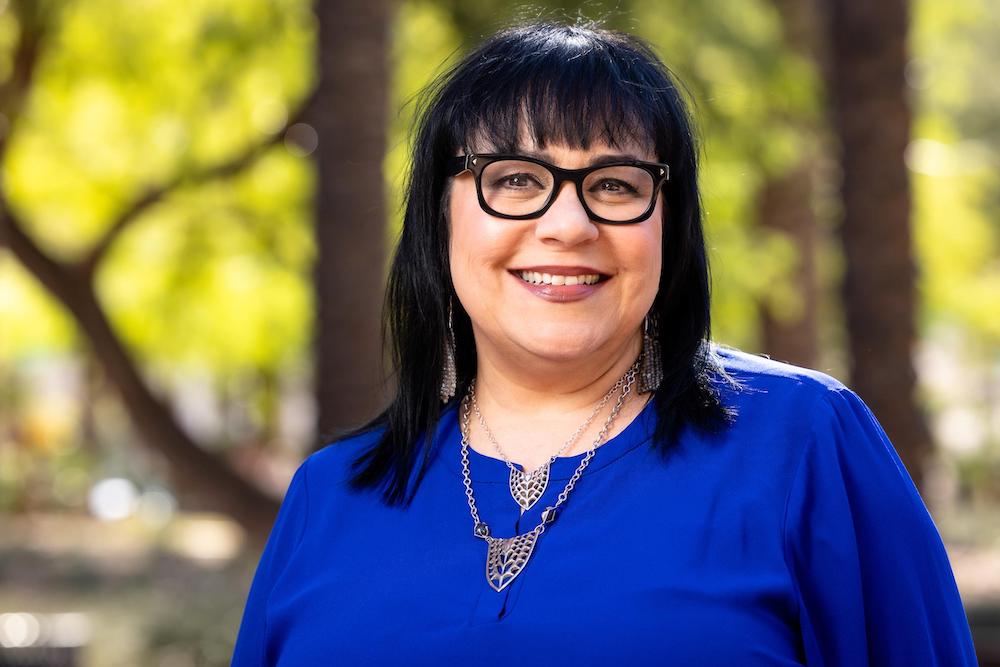
- Details
- By Chez Oxendine
- Sovereignty
The federal government has funneled more than $2 billion directly into Indian Country broadband - with more yet to come. Between tribal-specific programs and wider eligibility for other federal grants, historic funding has kickstarted new tribal network infrastructure across the country.
As more Native Americans get online, questions of who controls tribal infrastructure, access, and data come to the forefront.
The people in the lead, of course, should be Natives themselves, says Dr. Traci Morris (Chickasaw), executive director of the American Indian Policy Institute and research professor at Arizona State University Sandra Day O’Connor School of Law.
Enter the Center for Tribal Digital Sovereignty, a new initiative to give tribes resources to control their digital footprint. The Center is the result of a partnership between the National Congress of American Indians (NCAI) and the American Indian Policy Institute (AIPI). The goal of the new organization is to help tribes design their own personalized plans for maintaining sovereignty in the digital space, Morris said.
“How do we manage our networks, how do we manage our infrastructure? How do we build that next generation?” Morris told Tribal Business News. “That's part of nation building in a new era.”
Morris spoke with Tribal Business News to talk through what the Center for Tribal Digital Sovereignty hopes to achieve. This interview has been edited for clarity and brevity.
When we talk about digital sovereignty, what does that mean?
There's a whole ecosystem of things that wrap around what we used to just call broadband. It's way more than broadband now. There’s network sovereignty, which is control over the infrastructure. There’s data sovereignty, which is control over the information that goes out. Tribal digital sovereignty is a phrase with which we think about that.
There’s a lot to consider, with so many tribes getting improved connectivity.
There's $3 billion in the process that's in the process of being invested. When you bring a lot of money into a space, you bring a lot of confusion, too. It’s not just about getting cellular service. It's about tribes being able to control their data and access on their own terms. We want tribes to maintain their own capabilities as they see fit.
The goal is to help tribes build digital sovereignty plans. What kind of things should tribes be planning for?
A data sovereignty plan might include tribal policy, like rules that all servers reside on tribal lands, and what data can go through them. In that plan, they might also include investing in local training programs for their youth and for folks coming out of college. I think it can be as comprehensive or as piecemeal as a tribe needs.
What kind of resources is the Center pulling together for tribes to access?
What we want to bring is free open-source access to all the information that is out there. We also want to provide capacity building and scholarship services between our two organizations, and a coalition of experts in this space.
What kind of services are we talking about?
We have scholarships for those going into tribal digital sovereignty research, and for training people to specialize in tribal digital sovereignty plans. That’s a strong suit of AIPI, and that’s definitely the space we’ll be operating in.
Then there’s the clearinghouse. That’s basically a data repository - bringing together stuff like federal information, state information, funding information, all of that in the same place. It should be an open-access, one stop shop for everything tribes need.
We also want to do capacity building to just build that next generation of experts in this field. That’s going to be everything from boots on the ground installation training to digital equity training. We’re developing an online master’s in legal studies program with an emphasis on tribal digital sovereignty.
Speaking of experts, you mentioned a coalition of people working with the Center. What’s the goal there?
That will be bringing organizations together who have a mission of service to tribal nations, or people who have done work with tribes on building this digital footprint, so more people can access that resource.
Has that access been a barrier previously?
There's not a lot of folks that have expertise - it's not just tribes that have difficulty accessing experts in this space. It's a new space, you know?
It's funny, because I sit on the governor's council for broadband here in Arizona. They struggle to find experts to even hire in these spaces, as do organizations doing digital equity. It's just a new space, and so it's still developing.
It's hard to find experts in this generally, let alone for tribes, so what we’re going to do is bring the experts we can find together. It will be more tribal centric — not all the folks on the coalition will be tribal per se, but will have worked in tribal communities.
You mentioned this is a new space, a new discussion for a lot of people. What have you told tribes to galvanize them into being concerned about digital sovereignty?
When you tell them “tribal digital sovereignty is this overarching way of talking about data, infrastructure, and access,” they get it. You tell them that, and they realize it's not any different than water, it's not different from education or healthcare. We manage all those spaces in a sovereign way. It's a natural resource in many of the same ways.
